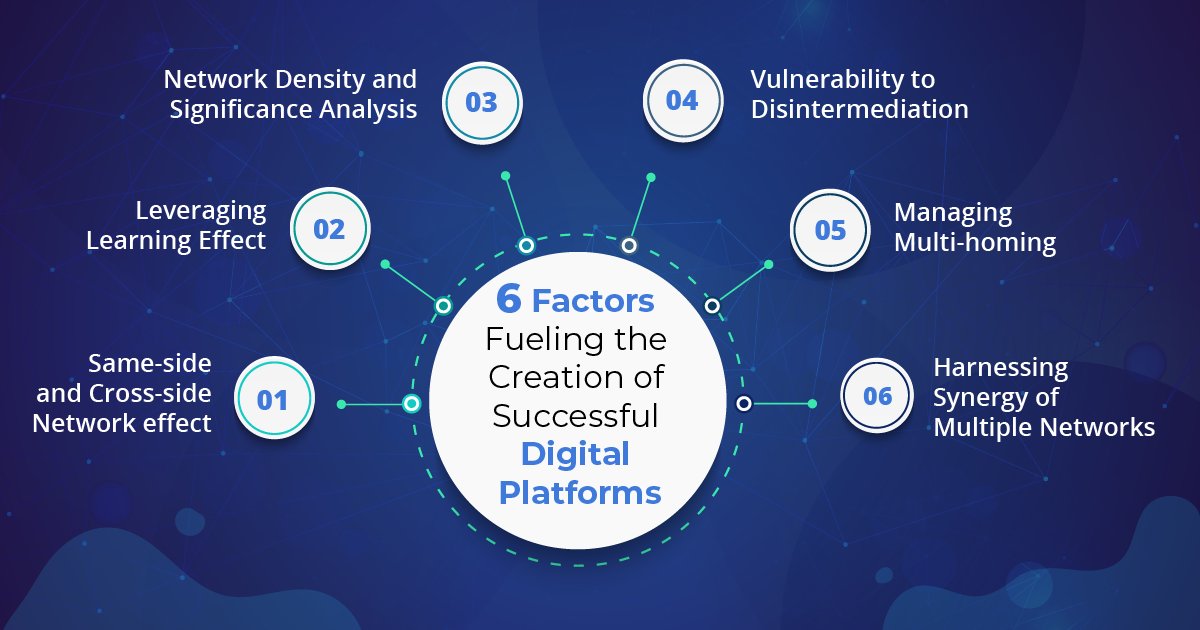When Didi (Chinese cab service) merged with Kuaidi in 2015, it forced Uber out of China. Most expected Didi to enjoy monopoly for a while. But after Meituan and Alibaba launched their services, price wars ensued causing Didi to hemorrhage cash. Why did the sheer scale of Didi, did not prove formidable enough? And what Makes Facebook, Airbnb and Alibaba so successful? Here are the six factors that influence the success of a platform, inspired from the research of Feng Zhu, professor HBS who specializes on digital platforms.
- Same-side and Cross-side Network Effect
Over time the network effect makes it more customers to join with an increase of customers. Even the big companies have seen their network effect wax and wane, hence like Amazon, building cross-side network effects is vital, more sellers attract more buyers. When Amazon third-parties to sell on its network it created a cross-side network effect in which sellers and buyers mutually attracted each other. Similarly, Uber drivers attract additional riders and more riders attract new drivers.
- Leveraging Learning Effect
Beyond network effect, another aspect that determines success is the capability of the platform to learn from the transactions or data. Amazon deployed AI/ML to predict better suggested items and lead to its exponential growth. Tesla with its initially free cameras and connectivity learned rapidly to expand autonomous driving capabilities. Data is a treasure trove of value and has to be leveraged.
- Network Density and Significance Analysis
For better strategic decisions it is vital to give due weightage to its distribution. For instance, consider this: users may consider the numbers of cab/drivers available in their city to choose a provider, but while travelling, they may prefer a hotel provider that has robust international or national presence, disregarding their hometown stats. Thus, analysis of network distribution is vital for decision making. For international tourists, Airbnb holds a lot of appeal due to their global presence.

- Vulnerability to Disintermediation
To allow or not to allow, that is a serious question almost all platforms face. Many platforms such as Homejoy, that provides home cleaners, did such a good job at matchmaking that after a while neither the cleaners nor the homes needed the application. The risk of users bypassing the platform is a risk that must be carefully assessed. Some companies such as Airbnb do not disclose host details such as name and location until after payment, but anything that makes the platform cumbersome invites competition. Ebay’s EachNet lost to Taobao e-commerce in China, as it changed and allowed interaction between parties at a later stage. Taobao exploited it and allowed interaction in real time and charged no fee.
The best way to prevent users from bypassing your platform is to offer complimentary additional services that consumers need, ex. offering insurance or free driving lessons to a used car customer’s family members.
- Managing Multi-homing
Even successful platforms such as Uber, face the issues of their riders registering for multiple platforms, and their riders option multiple ride-sharing platforms. This issue can weaken a platform’s ability to sustain and grow. Uber offers bonuses on meeting targeted rides and shows them more riders while completing one. Amazon charges more fees for non-exclusive Amazon deals, and Amazon Prime with multiple benefits prevents user side multi-homing. Providing value is the best safe guard rather than combating the issues directly.
- Harnessing Synergy of Multiple Networks
For a platform two things are vital: users and data of interaction. Alipay, and Amazon pay make sense as they further the parent company’s cause. Ant financial (Alibaba) creates synergies in unprecedented ways and mutually reinforce each other. Paytm, Indian payment platform has since inception diversified into many financial services, leveraging synergies and remaining attractive.
Techment’s Experience: Creating the Platform ‘TransAssured’
In rural America, getting reliable transportation is a challenge that gets further amplified if the traveler is a patient. Gary Nelson, the CEO of AVO Transportation and Language Services, USA, led the successful digital transformation of AVO. They went from primarily being a manual process-driven organization to an entirely digital one. This feat was possible due to ‘TransAssured’, a platform developed with the help of Techment as their technology partner.
Today, AVO caters to the rural transportation of insured injured workers across America and has seen a substantial rise in revenue, productivity, and lowering of costs. TransAssured helped AVO automate the majority of its work, enabling translators, drivers, hospitals, clinics, physicians, therapists, insurers, and other stakeholders to use the platform to accomplish their tasks and create value. As workers’ compensation space is highly regulated, there are limits to the openness AVO can have on its platform. But, within the regulatory boundaries, ‘TransAssured’ has helped AVO become a business leader. Such is the power of a digital platform when created in the right way.
The Successful Platform
The health and resilience of a platform rests with the strength of its network effects. For a long lasting and successful platform, the six factors must be considered together and working on these areas will illuminate the potential avenues of growth.
We live in such dynamic times that presents great possibilities for platforms to create value in a variety of novel ways.
 All Posts
All Posts


